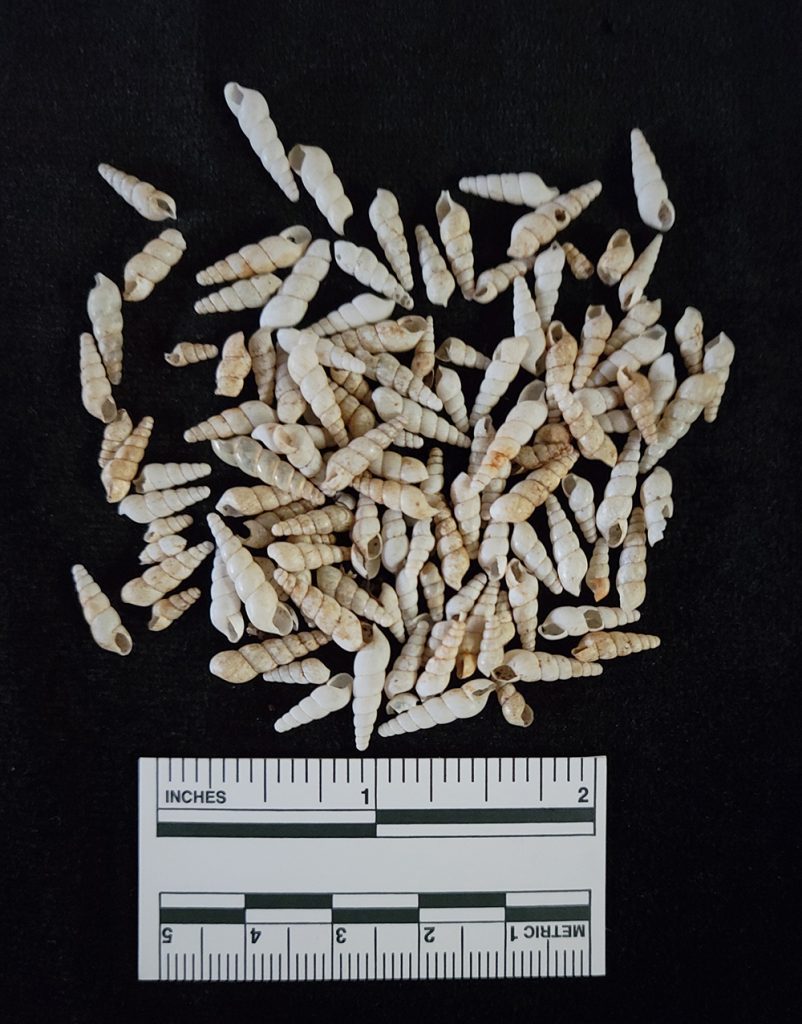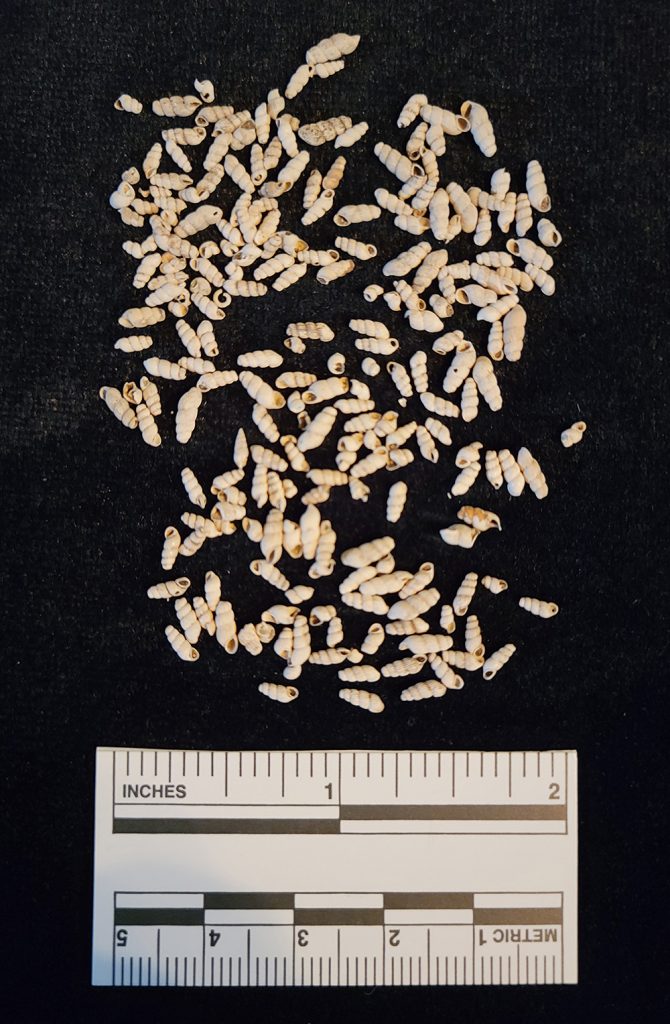A great thing about producing newsletters is that one can share bits of information with a lot of people. And if you ever wonder if any of your busy colleagues take time to look past page one, well, make an error, and you might find out, as I did.
An “alert reader,” namely Florida Museum’s Roger Portell, invertebrate paleontologist, gently let me know that I goofed on the identification of the 2004 Hurricane Charley landsnail shells shown in the photograph that accompanied my article in the July, 2021 newsletter. It turns out that they are not shells of beautiful truncatella (Truncatella pulchella), as I thought. Instead they are shells of a larger landsnail known commonly as the miniature awlsnail or scientifically as Subulina octona.
John Slapcinsky, a landsnail scholar in the Florida Museum’s invertebrate zoology section, confirmed the identification and told me that the miniature awlsnail is an invasive tropical landsnail, introduced to Florida in modern times. The linear concentration of its shells across the sloped surface of the Randell Mound nonetheless marks the upper extent of Hurricane Charley’s floodwaters because the awlsnails drowned and along with the other debris (see photo in previous article), the dead snails were left behind when the waters receded. Their shells, still intact (see photo), were found by us ten years later in 2014. However, the truncatella shells that are in our AD 300 and AD 1000-1450 archaeological deposits (see previous article) are indeed truncatella shells, doubly confirmed by John. Unlike the awlsnail shells, they are there because while alive, the truncatellas were attracted to decaying seagrasses after floodwaters left them behind and they subsequently died in place. For comparison, the AD 300, archaeological truncatella shells are shown in the second photograph.
So, thanks to Roger and John, I now know that awlsnail shells, not truncatella shells, marked the extent of the hurricane’s surge of 2004, but the real truncatella shells we found in our excavations do indeed provide evidence of where stormwater levels were circa AD 300 and AD 1000-1450. And now you do too!
This article was taken from the Friends of the Randell Research Center Newsletter Vol 21, No. 1 & 2. November 2022.

